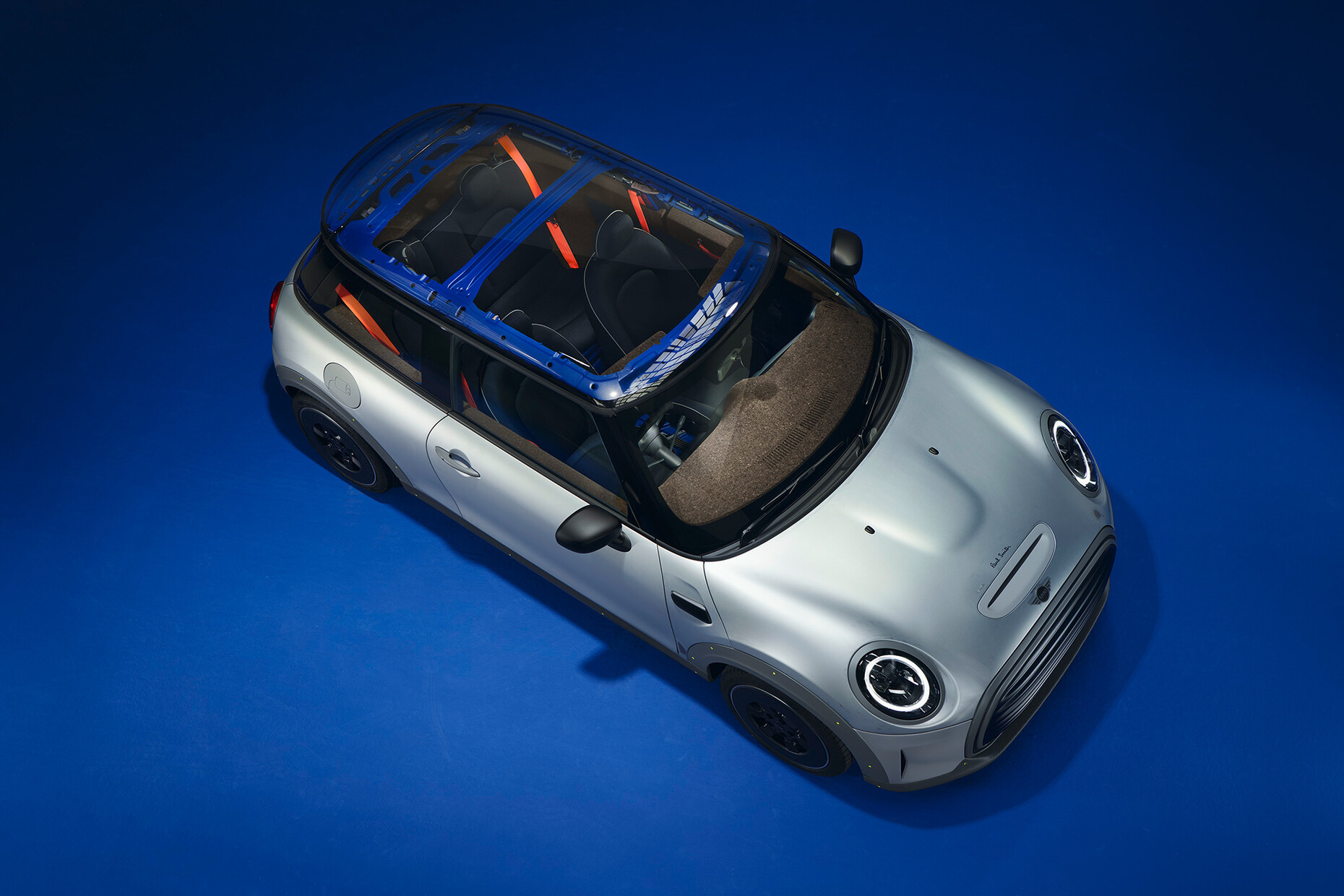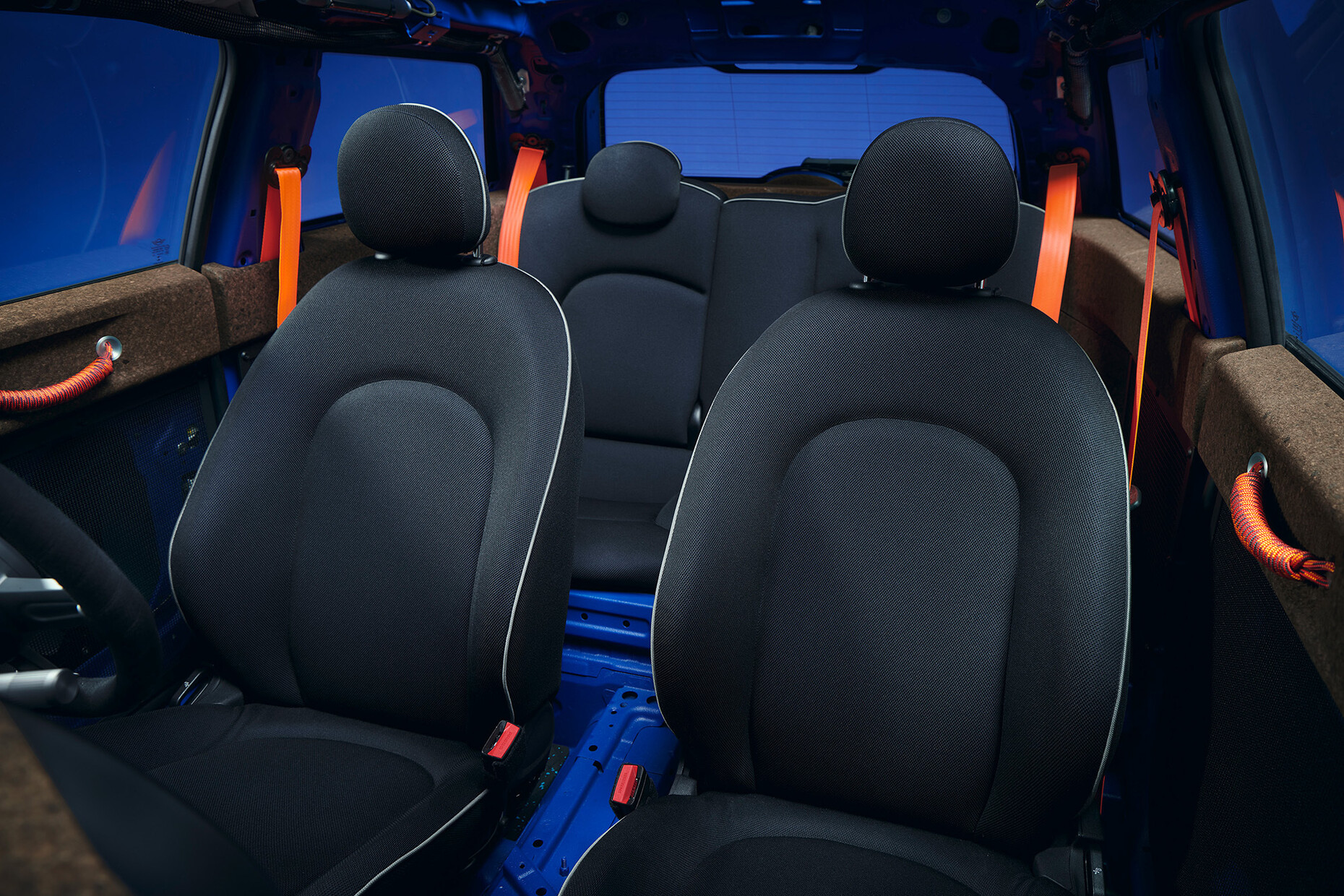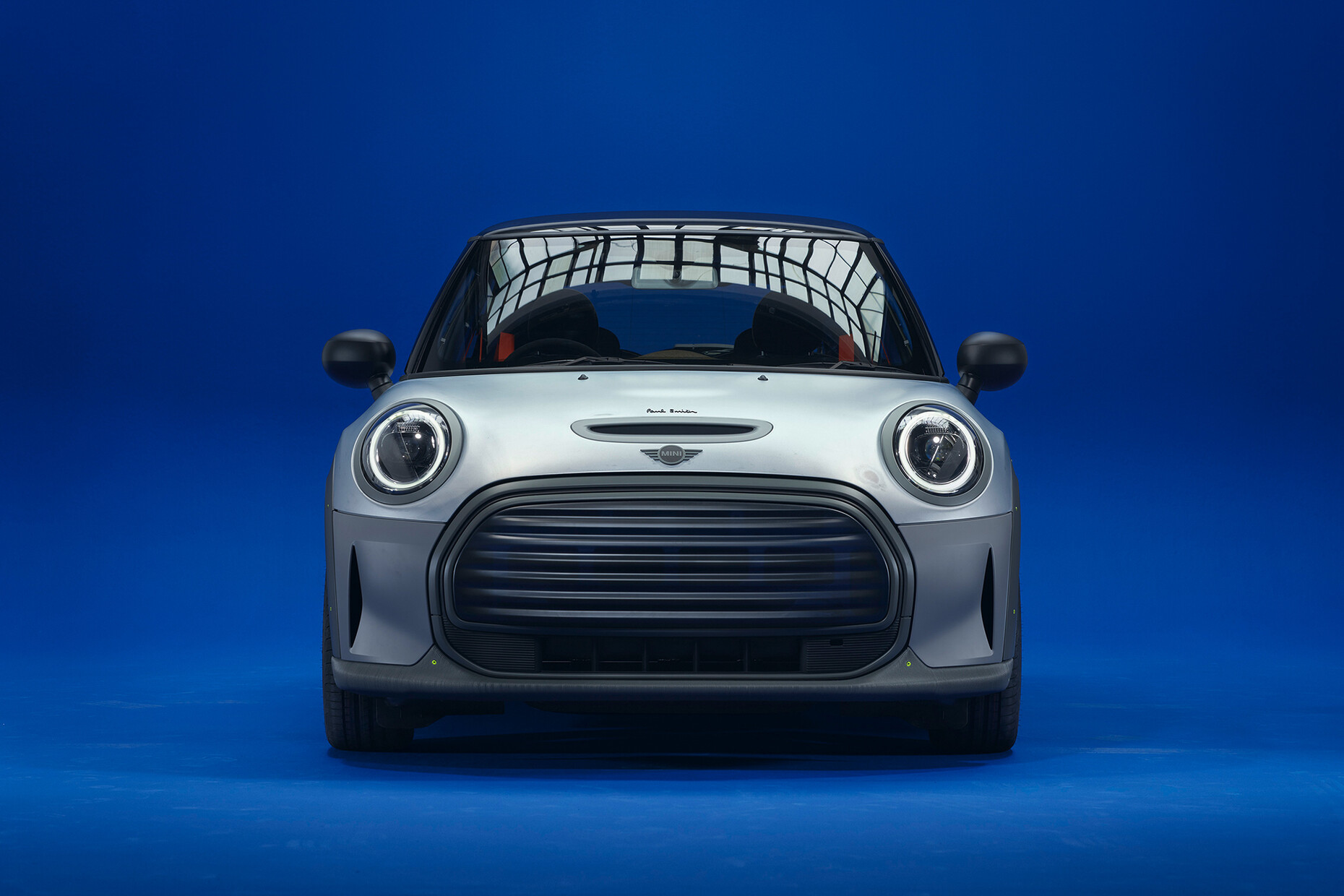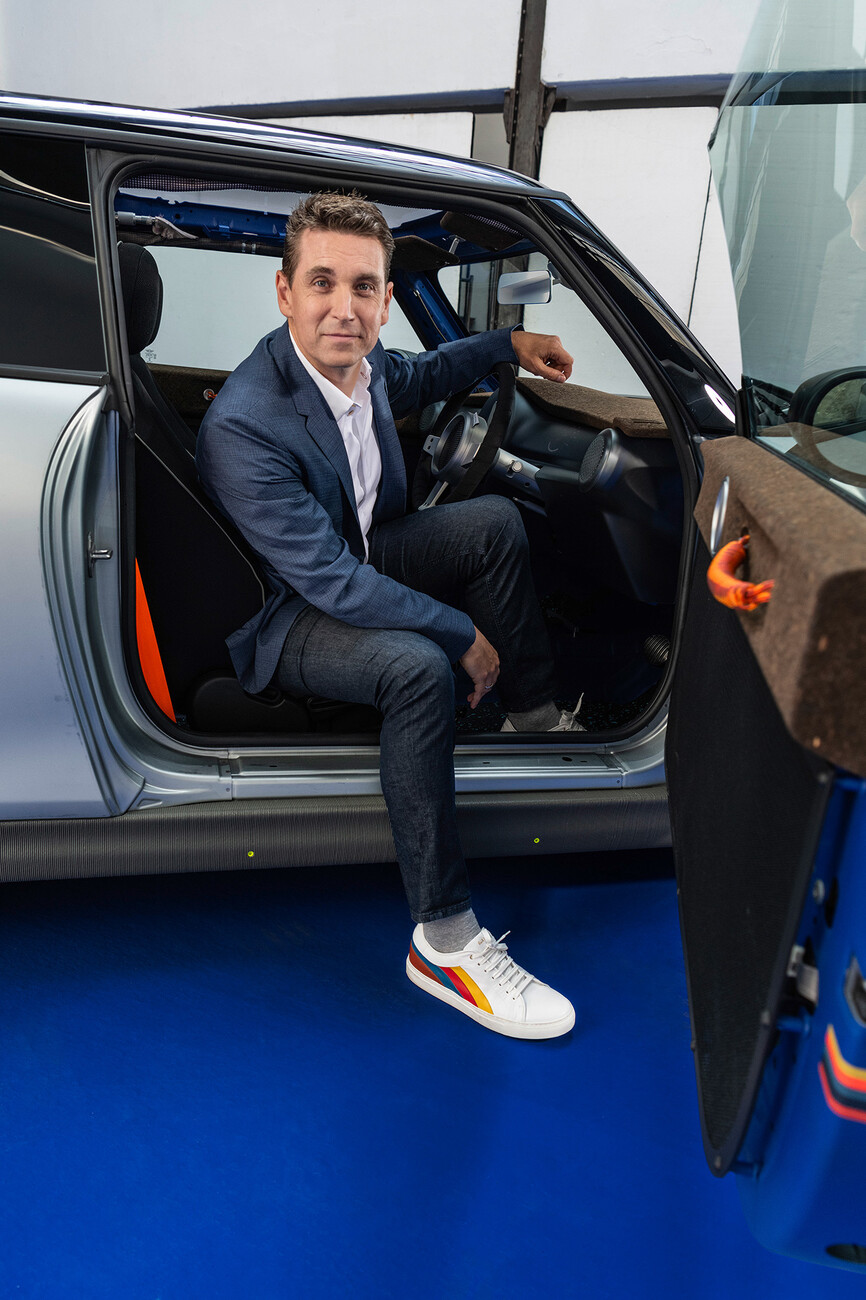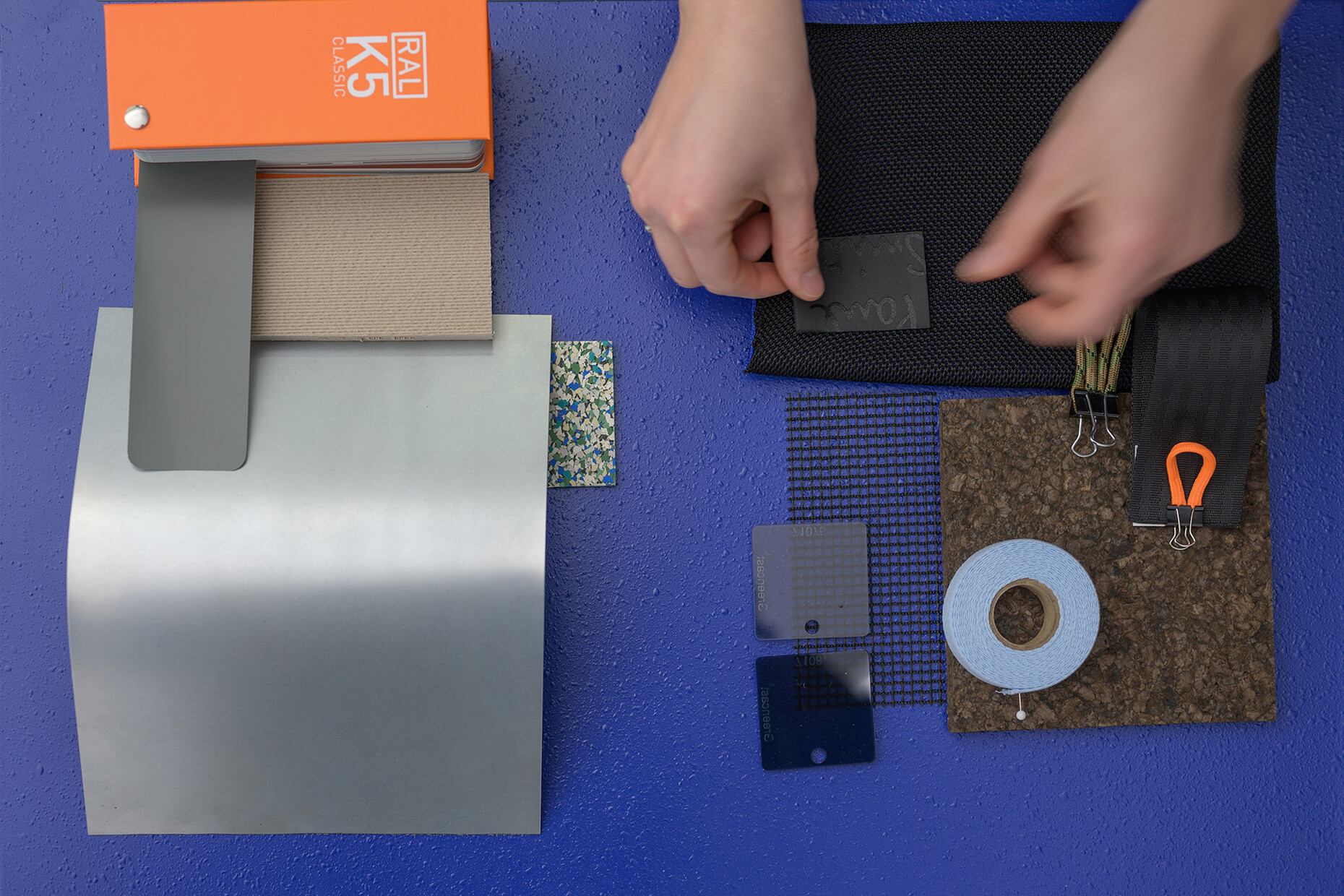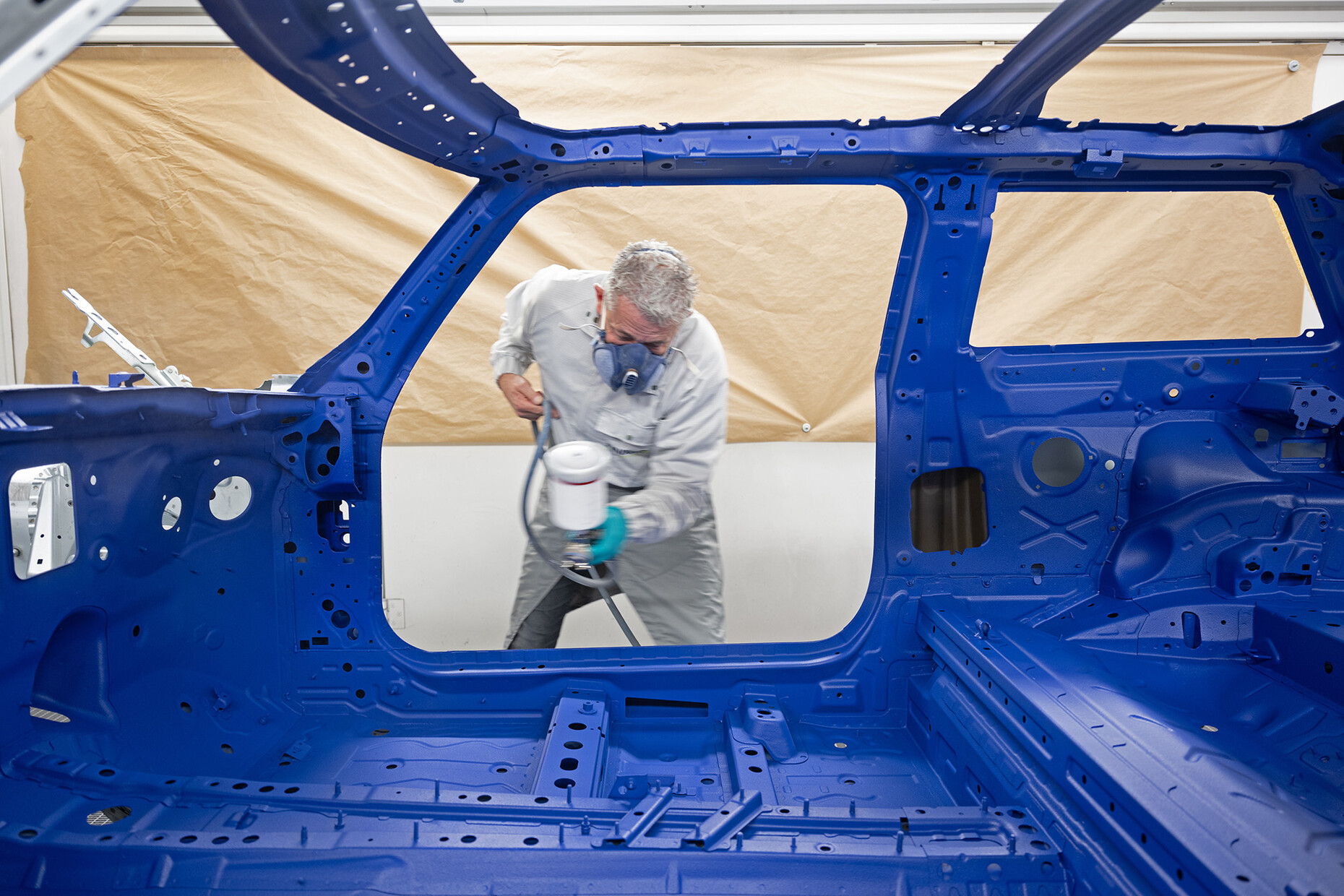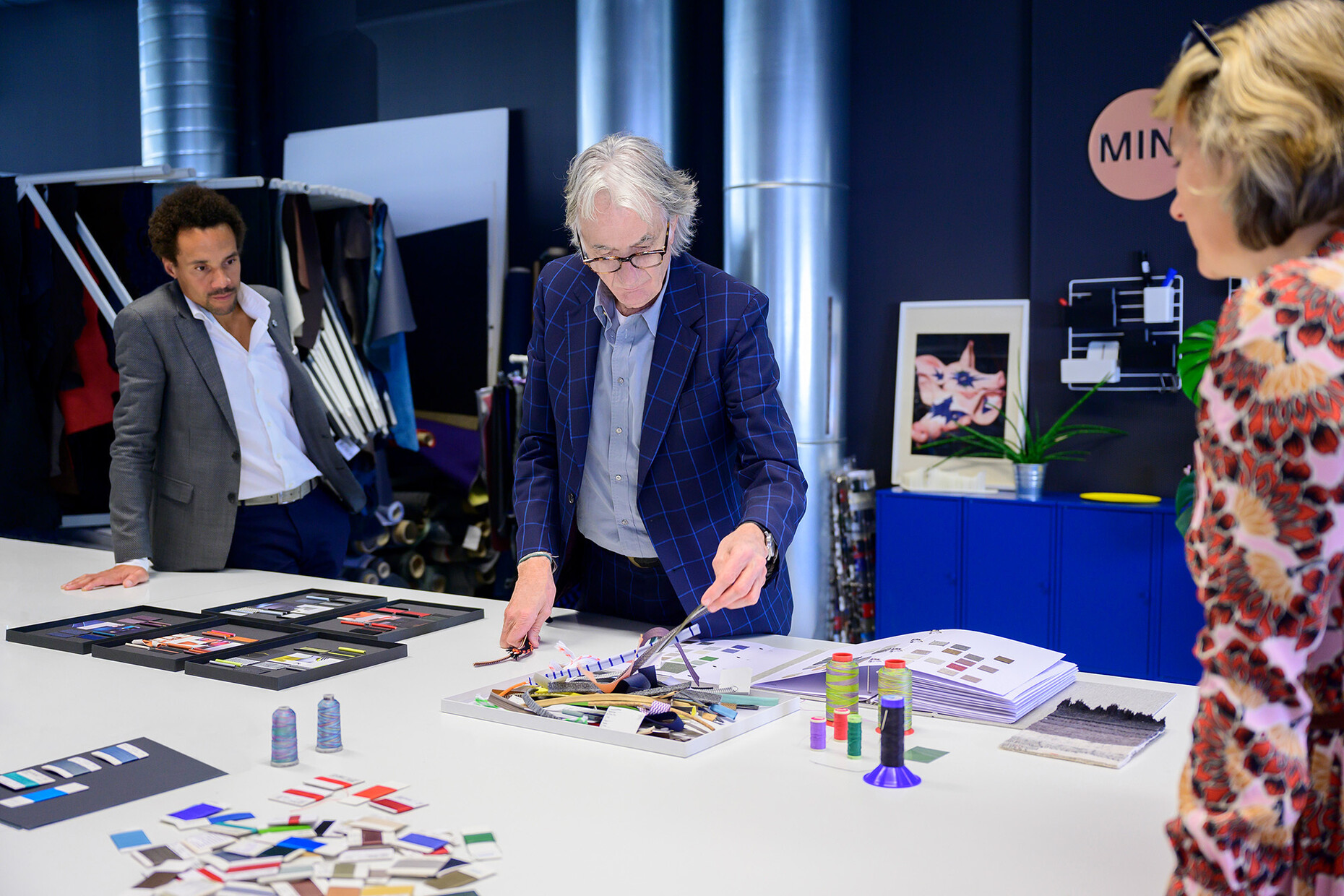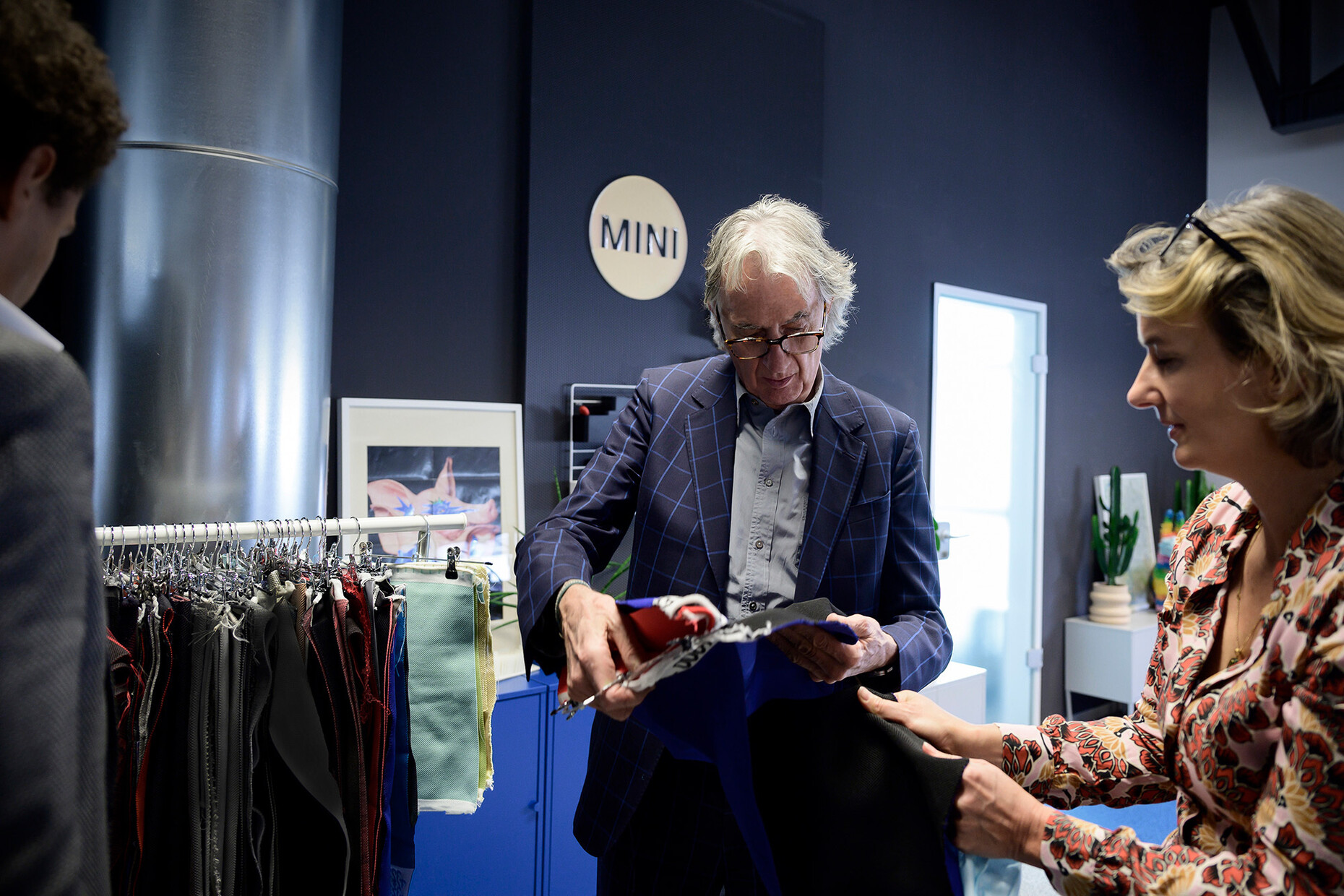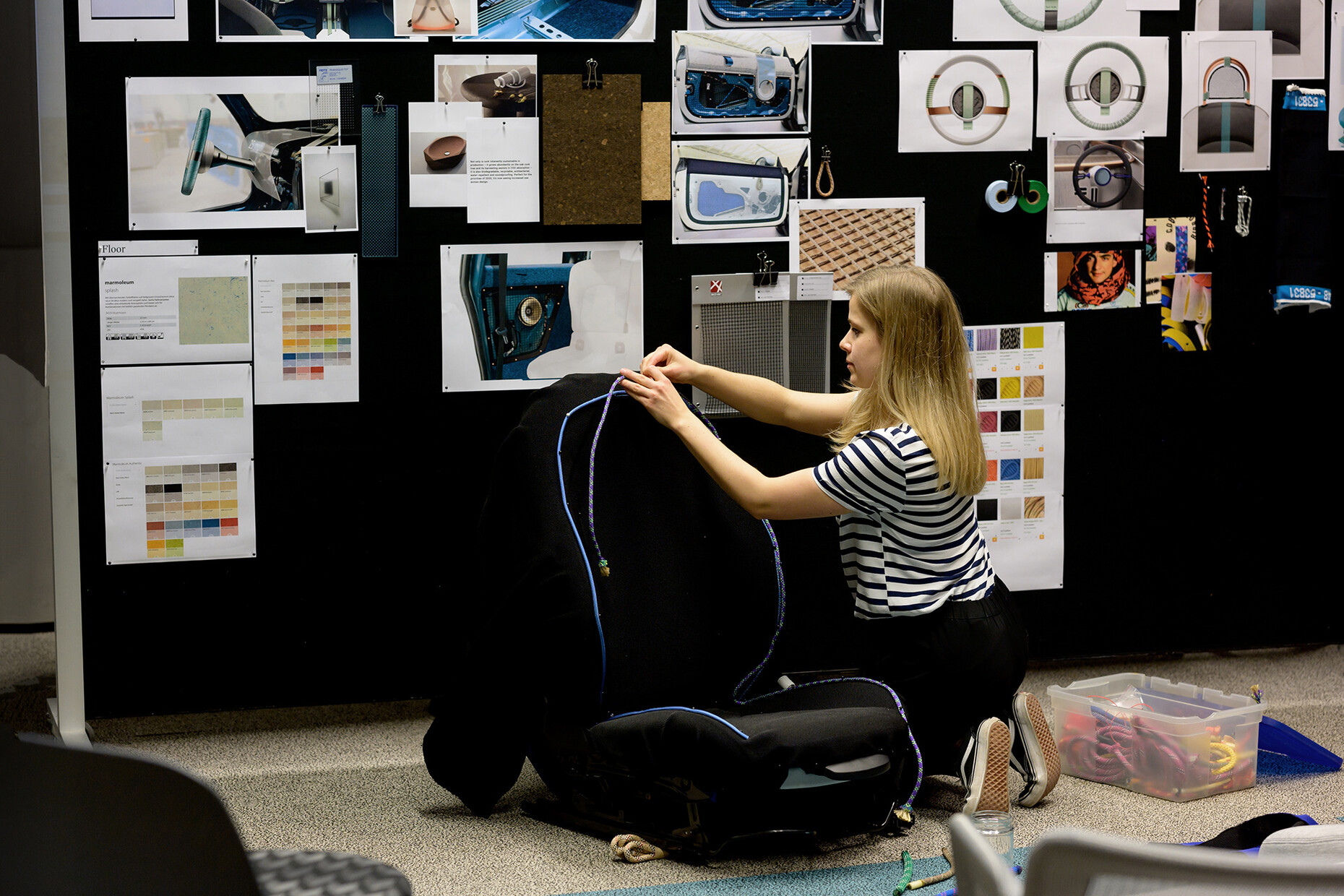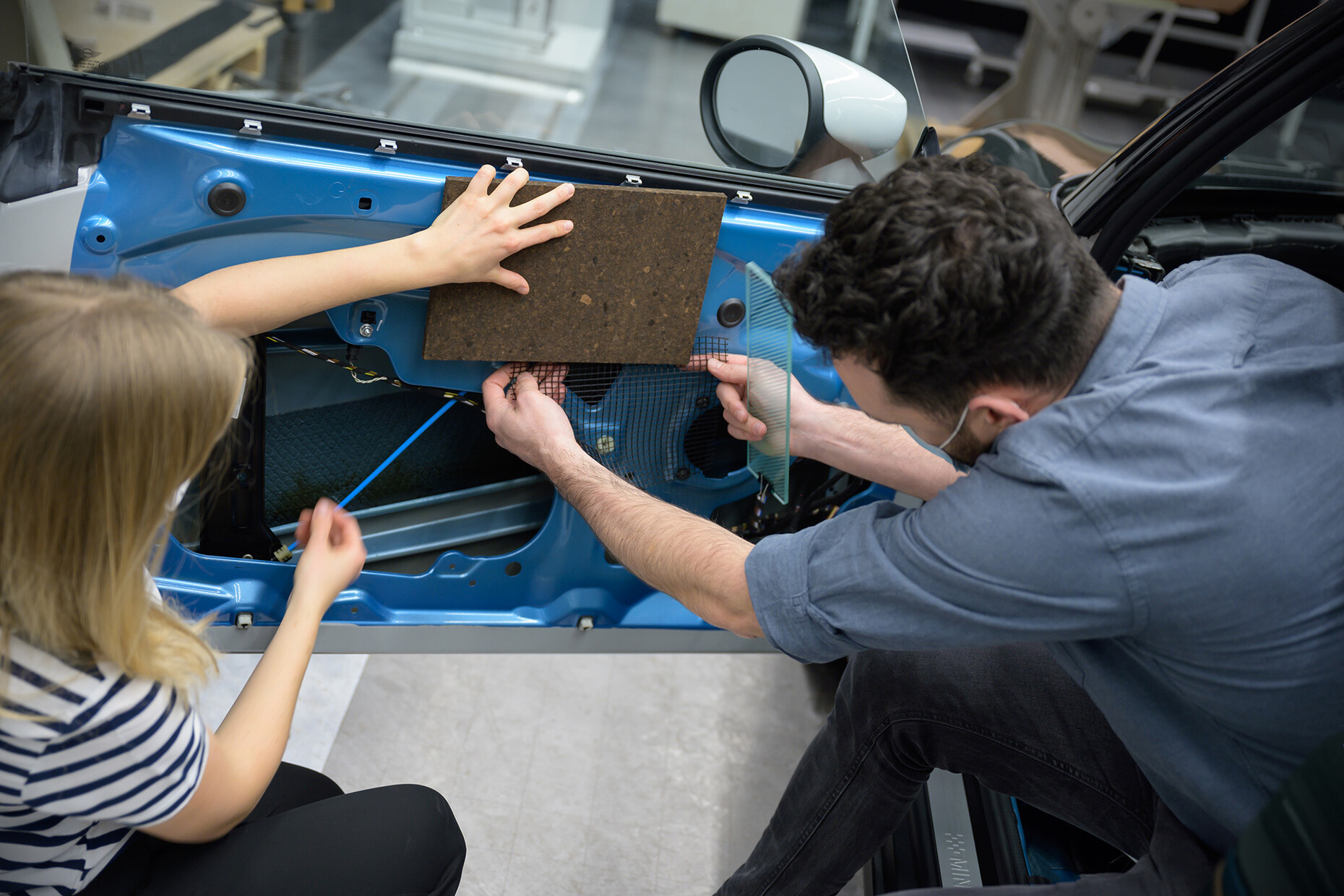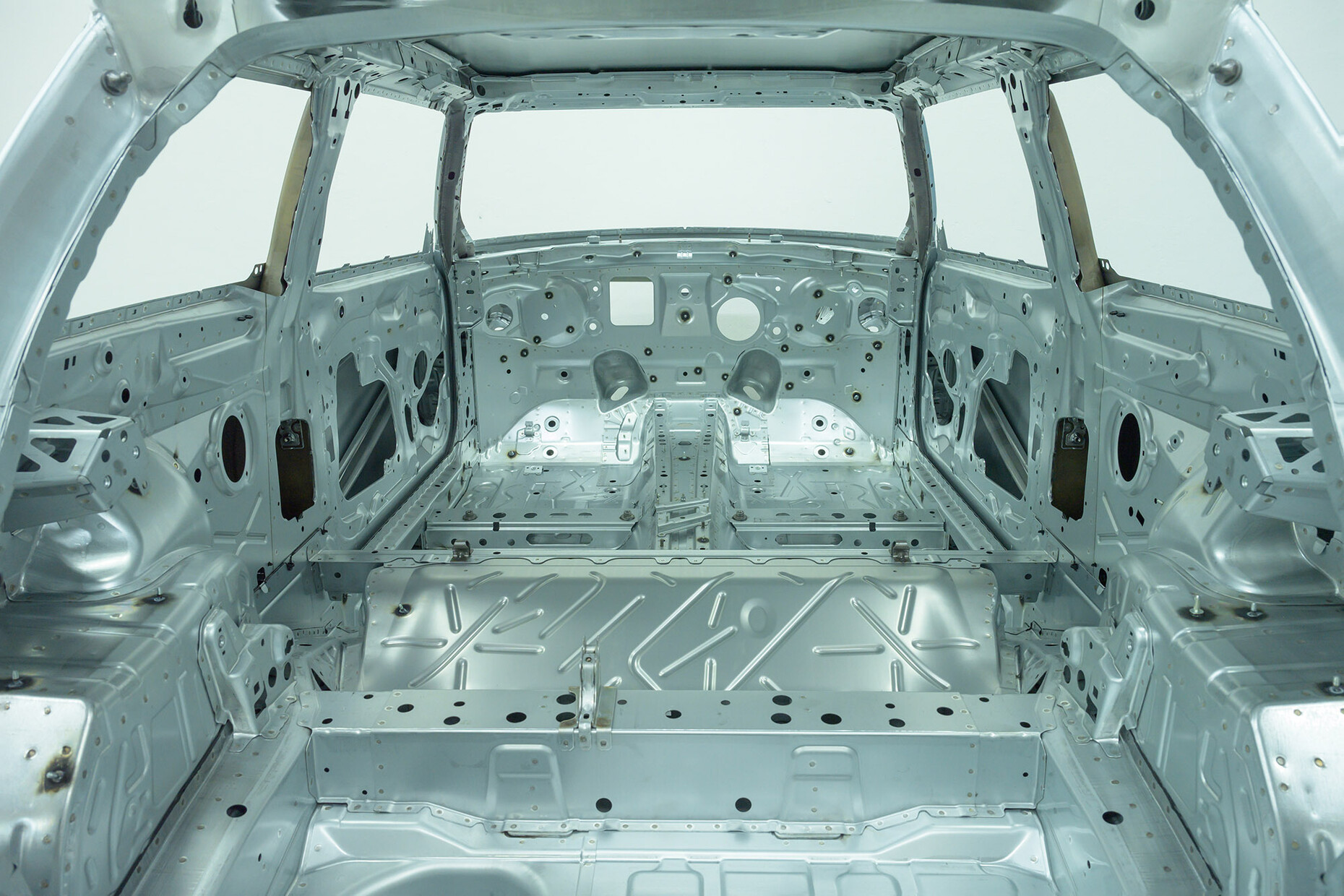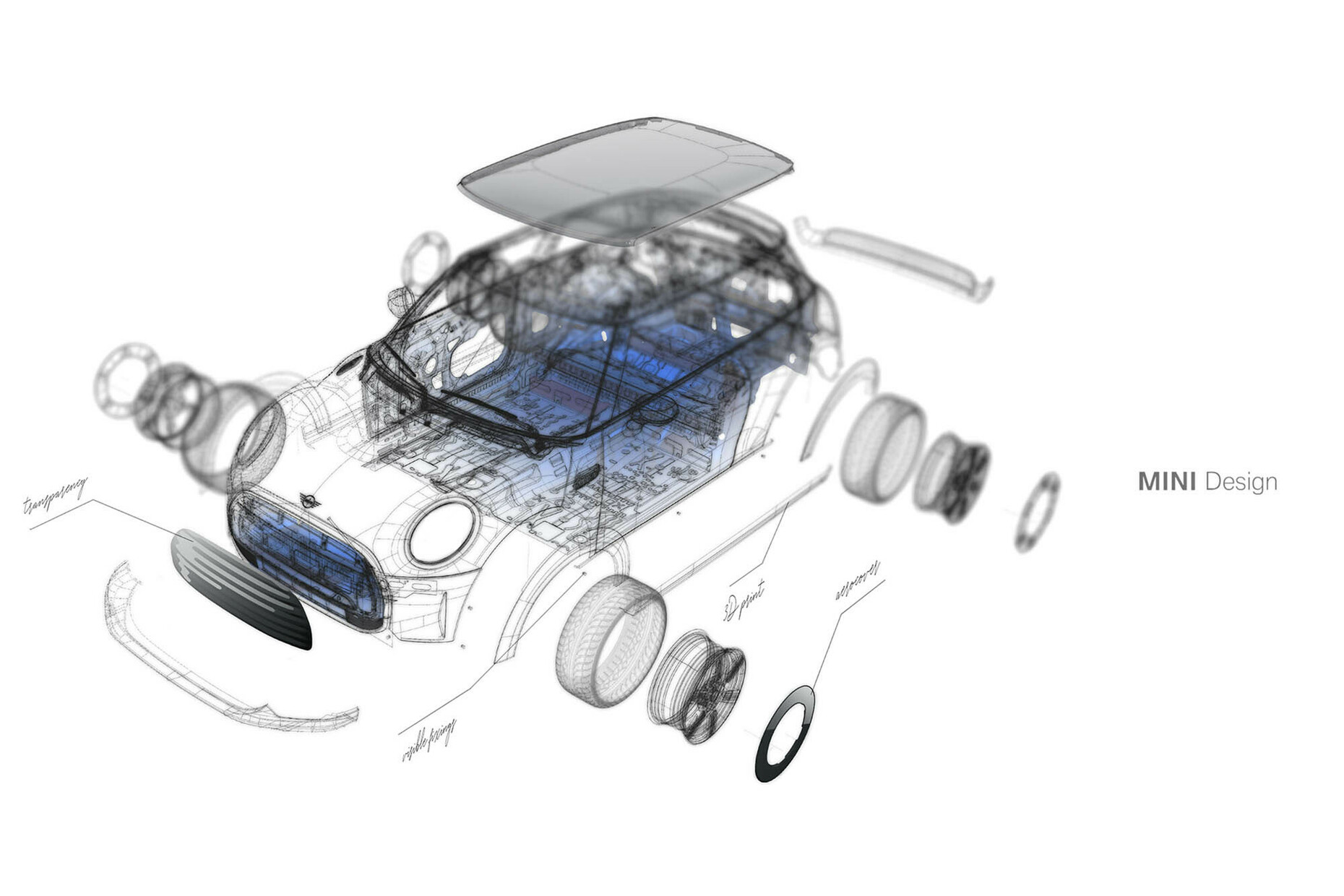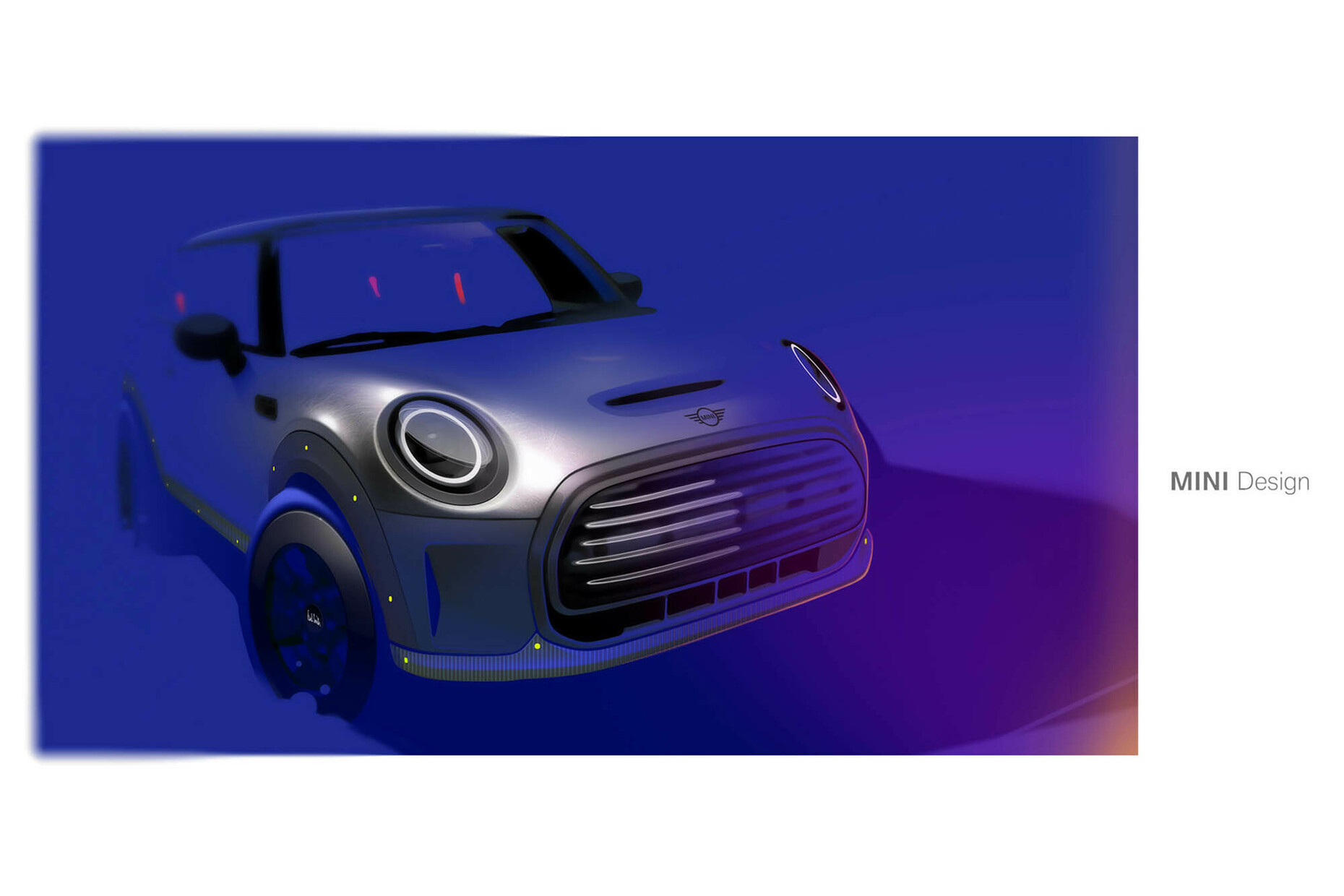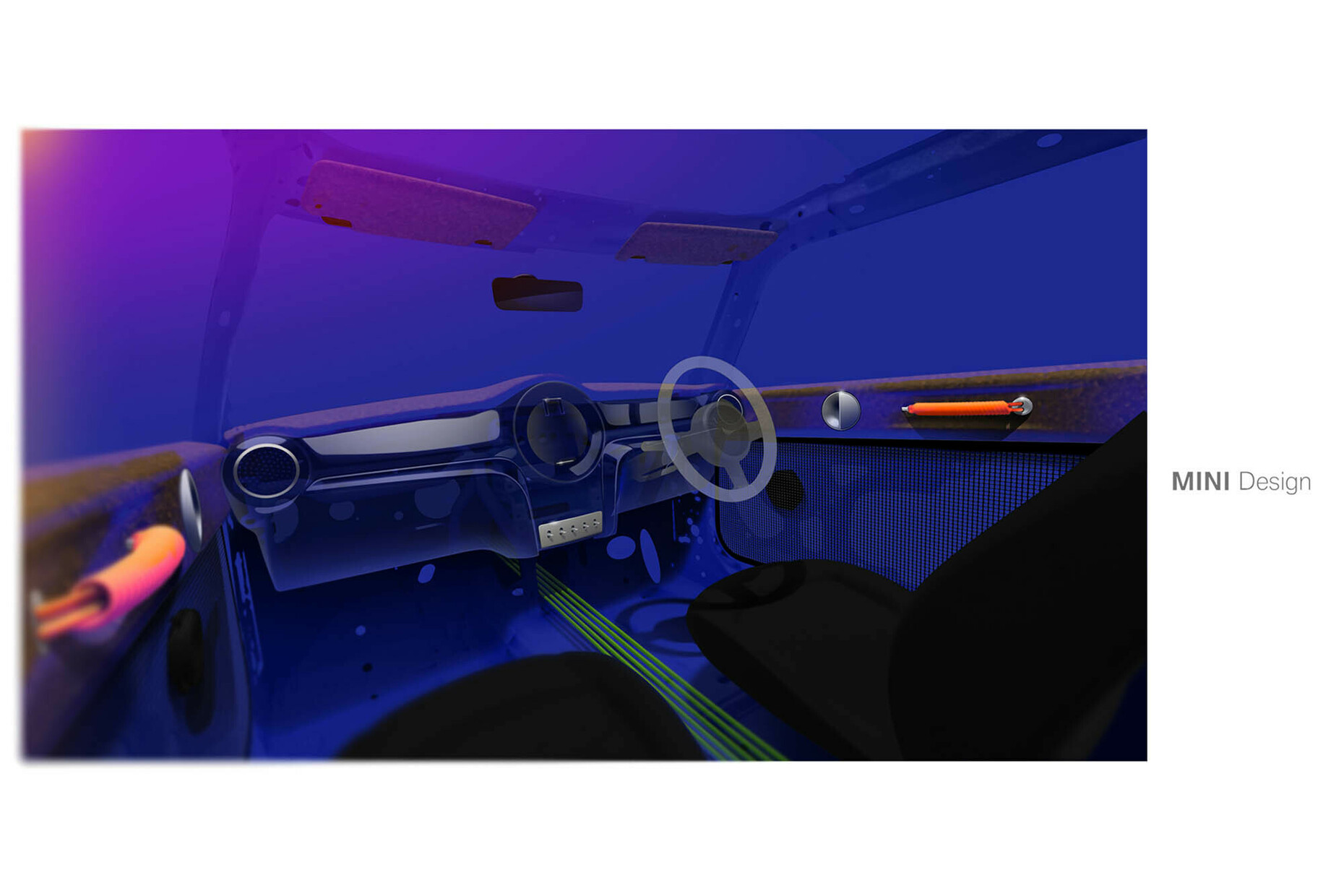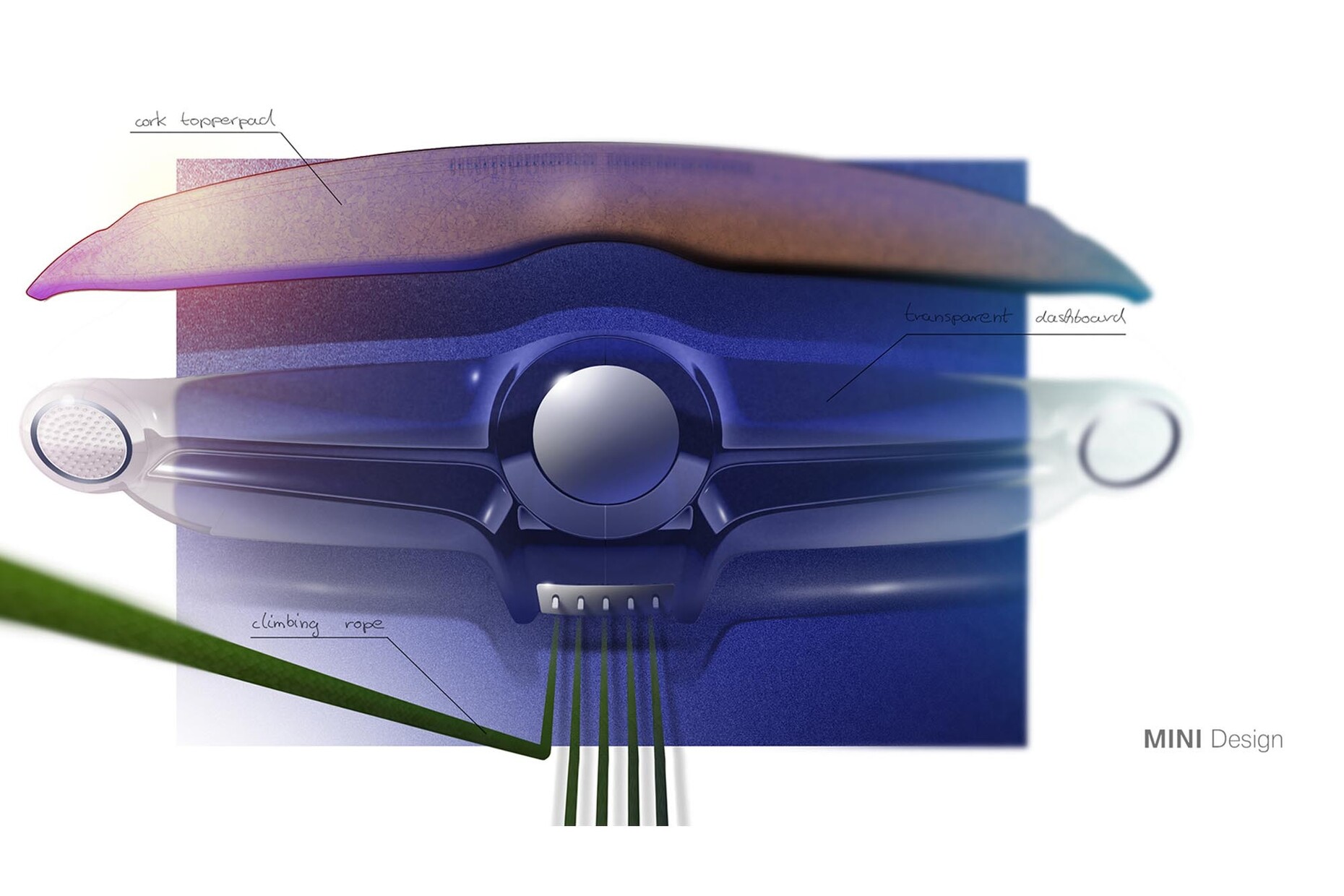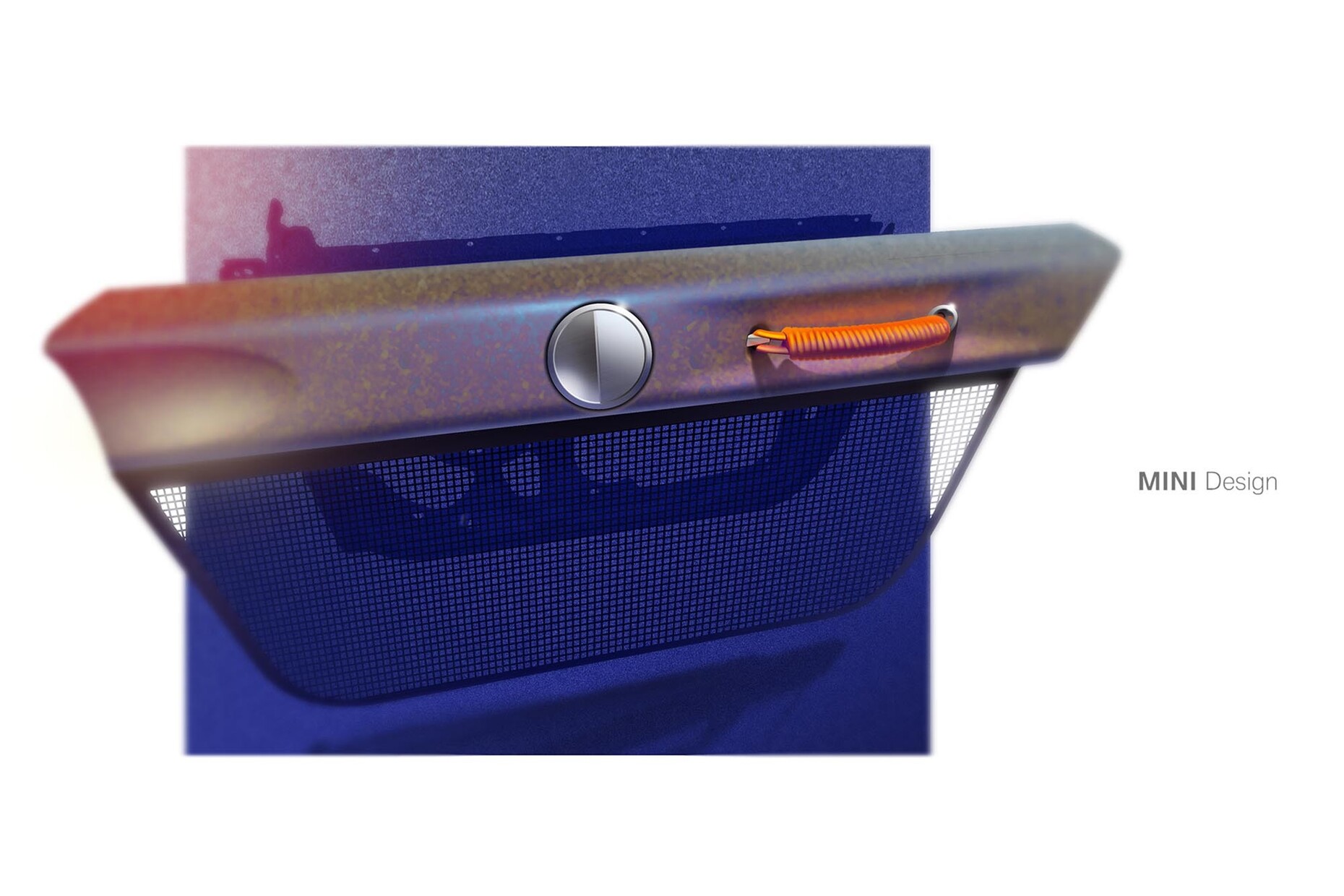STYLEPARK MINI
Perfect imperfection
Sometimes input from an outsider can produce a completely new kind of creative exchange that provides the inspiration for something new. This also holds true for the cooperation between MINI and British fashion designer Paul Smith who teamed up to develop the MINI STRIP. "For me the MINI STRIP shows in an impressive way that MINI and Paul Smith share the same bold way of thinking about the future in terms of innovation and design – and together we can create more. Paul asked essential questions right at the start of the design process with his non-automotive and therefore fresh perspective. We are proud to have developed such a strong character statement together," says Oliver Heilmer, Head MINI Design about the collaboration.
The outcome can be summarized using words like "simplicity, transparency and sustainability" – and indeed, the name of the new MINI STRIP indicates the approach because here everything is "stripped down" and reduced to the essentials. This involved stripping out a three-door MINI Cooper SE. Subsequently, Paul Smith defined the elements he considered necessary. However, it was not only about innovative design but also the question of what a sustainable approach in automotive design might look like. In the MINI STRIP it entails the use of recycled and environmentally-friendly materials which is why the interior is completely free of leather and chrome. Instead, the seats are covered in a knitted fabric and can be completely recycled. Simultaneously, with their terrazzo-like pattern the foot mats of recycled rubber demonstrate that sustainable products can also have an individual design. That said, it is not the individual elements that testify to the sustainable approach of the MINI STRIP: The topper pad of the instrument panel, the door panels, and the hat rack were made of cork that can be shaped using heat and without adhesives. As a renewable raw material that binds CO2 during its "production" it is a potential substitute for foamed plastics and it just so happens to also ensure enhanced acoustics inside the car. Recycled elements feature outside: for example, the typical MINI black strip that was 3D-printed from recycled plastic or the radiator grill cladding and the aero-covers on the wheels made of recycled plexiglass.
The visible screws in the attachments illustrate that sustainability can also be communicated in a lighthearted manner. They are intended to demonstrate how simple dismantling is and how easily the vehicle could be returned to the raw material cycle again. Simultaneously, they reflect Paul Smith’s passion for bicycles. Which brings us back to the topic of design that plays a decisive role in the MINI STRIP alongside the sustainability concept. That can be evidenced amongst other things in the spectacular panorama roof of recycled plexiglass and the blue color inside – both of which impressively illustrate the confidence with which the British designer approaches his work. Otherwise, radical stripping down is the motto of the day: the largely raw structure makes it unmistakably clear that it is about simplicity and transparency in the truest sense of the word. All cladding elements were consciously omitted with the exception of the dashboard, topper pad and hat rack. Instead in another reference to the bicycle there are visible screws and even a steering wheel rim with tape wound around it.
Another aspect that contributes to this pared-down appearance is the visible cabling that emphasizes the functional approach of the design. Additional color accents are set with the orange-colored safety belts and the pulls on the door panels that were fashioned from climbing ropes. Otherwise, there are small, fine details everywhere. For example, there are Paul Smith’s signature stripes that come into view when you open the doors. The tailgate that, when opened, sets a neon green accent is also a subtle eyecatcher that is rounded out by a drawing of a socket on the exterior designed by Sir Paul Smith. Without much effort, the MINI STRIP comes across as having a surprisingly spacious interior. That is not only down to the panorama roof but also the door mirrors that are covered by black net and depending on your perspective reveal a glimpse of the door construction. And naturally a little British eccentricity is a must in the MINI STRIP, which is why the usual colored paintwork on the body is missing. Instead, a thin transparent film of varnish was applied as anti-corrosion protection. The abrasive traces this causes on the galvanized sheet steel are intentional. Paul Smith calls this " the perfect imperfection".
The British designer appears to be very satisfied with the result of the collaboration: "I’m incredibly grateful for the opportunity to rethink the iconic MINI. I know and love the existing car, but by respecting the past and looking to the future we have created something very special. I feel very privileged that the MINI team have given me the confidence and freedom to think laterally about the approach to the design of the car. Together I think we have created something truly unique, by going back to basics, reducing things down and stripping the car." However, for all that a drop of bitterness remains: the customized car only exists as a one-off. But perhaps that might be an idea for the next cooperation – to develop the MINI STRIP for mass production.
